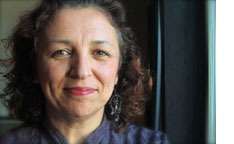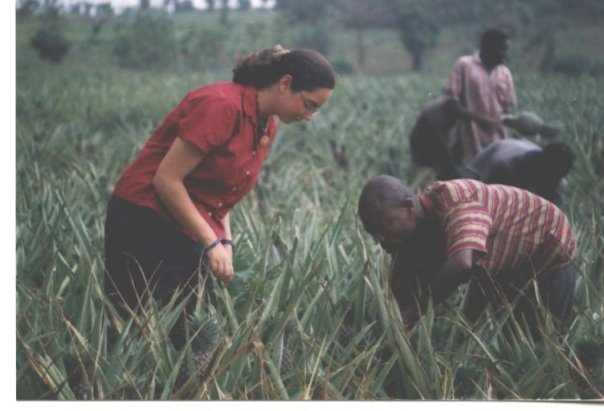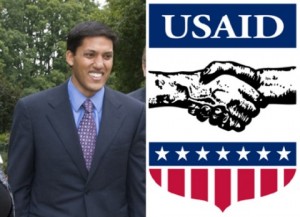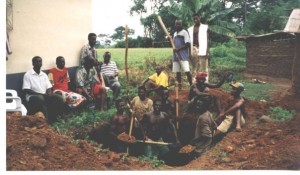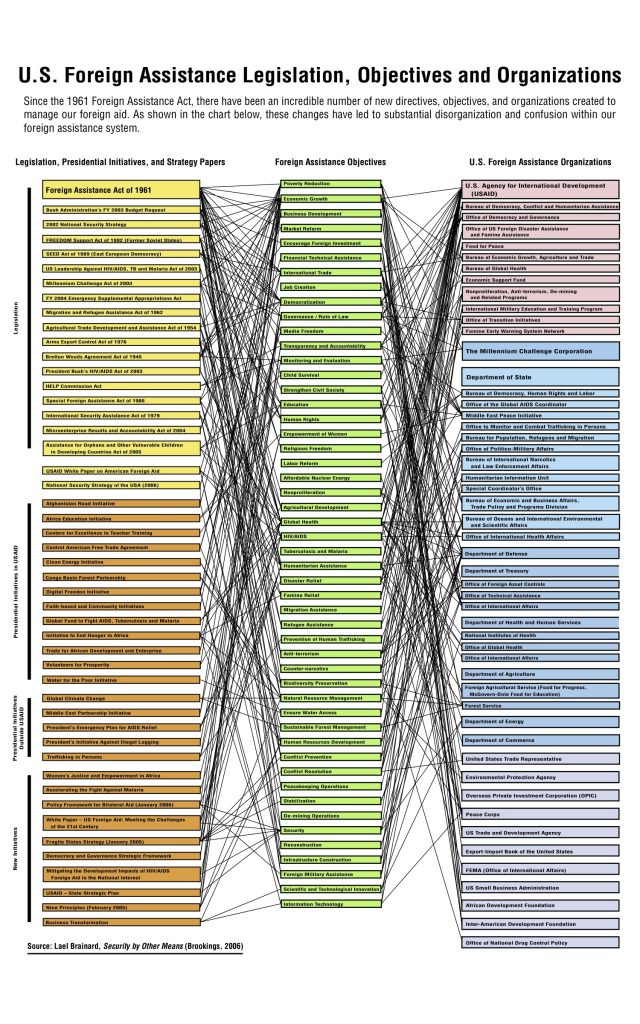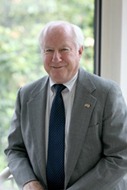Welcome to the June 2010 issue of the Global Washington newsletter. If you would like to contact us directly, please email us.
IN THIS ISSUE
- Note from our Executive Director
- Featured Organization: Unitus
- Changemaker: Julia Bolz – Ayni Education International
- Book Review – The Boy Who Harnessed the Wind: Creating Currents of Electricity and Hope
- Featured Program: Global Washington Hosted Counsultation on Development Effectiveness for Global Open Forum
- Announcements
- Global Washington Events
- Other Events
xxx
Note from our Executive Director
Greetings,
I hope you are all soaking up some much needed sunshine.
We are entering an exciting time at Global Washington, as we are developing new ways to deepen our commitment and programming to the global development community in Washington State. You are all doing amazing work in the field, and Global Washington aims to provide a space for you to exchange ideas, share best practices, and troubleshoot challenges with other individuals and organizations in the sector doing similar work.
That is why I am pleased to announce the debut of our quarterly “Case Roundtables” series on June 29! “Case Roundtables” will bring a group of Global Washington members together with a noted expert to work through a case presentation drawn from and presented by a member organization. The organization that presents its story will get a free, high-level consult, and all the participants benefit from the experience of applying their collective wisdom to a real-life issue they can all relate to and learn from. The focus of our first case roundtable is PR and Communications with Agros International, and the next one will focus on Fundraising. Please feel free to contact me if you are interested in presenting a case or participating in the roundtable on Fundraising.
Also, we have two exciting events scheduled for the end of June. “How to Become a Jolkona Partner” will show organizations how to increase transparency and demonstrate credibility to donors by utilizing the Jolkona platform to track funding flows. “Harnessing Commercial Strategies to Achieve Development Goals” will feature a panel of local business leaders as they share their strategies for partnering with corporate investors who are motivated by value-driven missions. We have had a lot of interest and response to both of these events so far—I encourage you to join us.
Finally, we are in the midst of planning Global Washington’s Second Annual Conference on November 15 & 16. Our theme this year is Bridges to Breakthroughs: How partnerships and innovation are changing the world. Last year’s conference was such a success, thanks to all of you who contributed your time, participation, and insights, and we hope you will join us this year. Our dedicated Conference Planning Committee and I are working hard to put together an agenda that will engage, inform, and inspire you. Early registration begins July 19!
Thank you to all Global Washington members and supporters. I wish you a wonderful summer, and I hope to see you soon!
In unity,
Bookda Gheisar, Executive Director
xxx
Featured Organization: Unitus
![]() In a world where 2.5 billion people live on less than $2 a day, innovative solutions must be implemented to spark economic growth and drastically improve the quality of life for those living in extreme poverty. As a solution, many believe microfinance is quickly becoming a key tool for fighting poverty and stimulating economic growth around the world.
In a world where 2.5 billion people live on less than $2 a day, innovative solutions must be implemented to spark economic growth and drastically improve the quality of life for those living in extreme poverty. As a solution, many believe microfinance is quickly becoming a key tool for fighting poverty and stimulating economic growth around the world.
Micro-loans and small-scale savings provided by microfinance institutions (MFIs) enable a person with virtually no reliable source of income to start a small business or better manage their existing household income. Inevitably, the resources provided by MFIs lead to more prosperous domestic and business lives for the recipients. Yet, for decades, microfinance was unable to fully meet the demand of the poor because MFIs lacked the scale and professionalized operations needed to effectively fight poverty. As a result of this shortcoming in microfinance, an innovative new organization was formed to bolster MFIs and expand the reach of microfinance services.
The idea for Unitus developed after a chance meeting between Muhammad Yunus, the founder of the Grameen Bank, and the eventual founders of Unitus, Mike Murray and Geoff Davis. This meeting served to show the potential effect investing in microfinance has on economic growth. Mr. Murray and Mr. Davis then engaged in a period of travel and extensive research of the microfinance industry. As a result, Unitus was founded with a strategy that would provide the capability to fight poverty on a massive, global scale.
 Unitus convenes a network of 22 MFIs in Africa, India, Southeast Asia, Mexico, and South America to help these institutions grow sustainably through capacity building. Each MFI is selected to be a part of Unitus’ network based on its potential to reach a large scale and serve a greater percentage of the world’s poor. Once a member of the network, each MFI has access to the integral services Unitus provides to reach sustainable growth.
Unitus convenes a network of 22 MFIs in Africa, India, Southeast Asia, Mexico, and South America to help these institutions grow sustainably through capacity building. Each MFI is selected to be a part of Unitus’ network based on its potential to reach a large scale and serve a greater percentage of the world’s poor. Once a member of the network, each MFI has access to the integral services Unitus provides to reach sustainable growth.
While Unitus directly invests capital into early stage MFIs, one of the most important parts of the Unitus strategy is its ability to attract investments into MFIs by facilitating funds through partner organizations. Providing the MFIs with capital enables the institutions to serve a larger pool of the working poor and supports the growth of MFIs.
Aside from providing capital investments in their MFI partners, Unitus provides consulting and advisory opportunities that are instrumental in raising the ability of MFIs to best serve their clients. Through advising individually and convening the MFIs together, Unitus builds the capacity of their partners with technological advice, human resources consulting, and assistance with strategic planning and transparent governance.
After only ten years in existence, the model on which Unitus was based has seen resounding success. To date, the network of microfinance institutions supported by Unitus has been able to reach more than 10 million families in the developing world. In India, where one out of every three microloan comes from a Unitus partner, SKS has become the world’s fastest growing MFI after joining Unitus in 2003. After joining Unitus, LifeBank of the Philippines has been able to provide loans to nearly 4 times the amount of people it did before it joined in 2006.
Though Unitus has achieved a great deal of success in helping to stimulate growth in the microfinance sector and provide microcredit loans to millions of the world’s poor, the organization has not finished evolving. The process of creating and maintaining a successful organization such as Unitus has been one of self-reflection to ensure sustainability and effectiveness. Achieving a large scale of microfinance has been central to the growth of Unitus, but future success hinges on other aspects of microfinance such as effectiveness, client diversity, and product breadth. By focusing on these other areas of microfinance, Unitus will be able to assist in creating jobs, protecting clients, and providing affordable products to the client.
With such a model, Unitus has been able to elevate and expand microfinance while helping to provide accessible financial services to millions of the poorest people around the world. As it grows, Unitus will be a key contributor to global economic growth and the fight against extreme poverty. To learn more about Unitus, please visit their webpage at www.unitus.com.
Changemaker: Julia Bolz – Ayni Education International – With True Respect
By talking with Julia Bolz, you would really gain a deeper understanding of the meaning of respect. From Julia’s development experience in Afghanistan, she learned that when you give and receive, it has to come from a place of love, gratitude, respect and humility – that’s the very basic essence of “Ayni”, the name she chose for the organization, Ayni Education International.
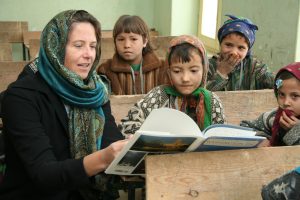 There was a little story behind why Bolz chose the name “Ayni,” which translated into English means “sacred reciprocity.” Like most of the schools she has helped build in Afghanistan, it takes several years of “blood, sweat and tears” to get off the ground and complete. She had just completed a new large campus and was enjoying its dedication when representatives from the Afghan Government asked, “What about the library, the computer center, more classrooms? A little frustrated, she caught herself thinking, “Can you not simply give me just 30 seconds of joy?” She immediately realized that split second of emotion actually came from her expectation for them to say “thank you” or “I appreciate the sacrifices that you made.”
There was a little story behind why Bolz chose the name “Ayni,” which translated into English means “sacred reciprocity.” Like most of the schools she has helped build in Afghanistan, it takes several years of “blood, sweat and tears” to get off the ground and complete. She had just completed a new large campus and was enjoying its dedication when representatives from the Afghan Government asked, “What about the library, the computer center, more classrooms? A little frustrated, she caught herself thinking, “Can you not simply give me just 30 seconds of joy?” She immediately realized that split second of emotion actually came from her expectation for them to say “thank you” or “I appreciate the sacrifices that you made.”
Upon reflection, Julia realized she hadn’t fully given from the heart and some of her motivations came from unconscious fears and feelings that ran from guilt of having so much to duty or obligation. It also made her realize that maybe she had not been opened to receiving. Consequently, Ayni Education International’s focus is not simply on producing excellent outcomes, but on the methodology used to get there – which “focusing on working together, trusting that differences add “spice” to life; sharing resources and ideas, each transformed by the wisdom of others; serving out of kindness and compassion; and spending time together and celebrating the gifts of life, recognizing each individual’s unique skills and talents. “
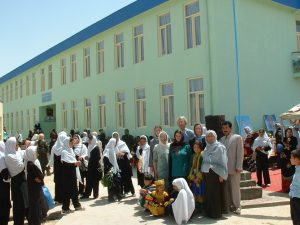 Prior to being a full-time social justice activist, Julia was a successful business immigration lawyer, representing Fortune 500 companies worldwide. When one of her sisters was diagnosed with ovarian cancer, however, she found herself asking– “Do I like who I am? Do I like the legacy I’m leaving behind?” Her answer was “no.” With social justice deep in her heart, Julia decided to take a two-year sabbatical in 1998 and moved to Africa to serve the poor, especially women and girls. These two years not only gave her a great overview of development, human rights, and poverty, but they changed her life, calling her permanently away from her law practice and into social activism in the developing world.
Prior to being a full-time social justice activist, Julia was a successful business immigration lawyer, representing Fortune 500 companies worldwide. When one of her sisters was diagnosed with ovarian cancer, however, she found herself asking– “Do I like who I am? Do I like the legacy I’m leaving behind?” Her answer was “no.” With social justice deep in her heart, Julia decided to take a two-year sabbatical in 1998 and moved to Africa to serve the poor, especially women and girls. These two years not only gave her a great overview of development, human rights, and poverty, but they changed her life, calling her permanently away from her law practice and into social activism in the developing world.
Uniquely, Julia has travelled to or worked in over 70 countries around the world and has done work in microfinance, land reform, healthcare, constitutional reform, justice reform to name a few. Believing it wasn’t simply good enough to talk with people about their problems, she often lived with them, albeit in mud huts or townships without running water or electricity. Her hope is that it would give her a better understanding of and respect for the people and the problems they face.
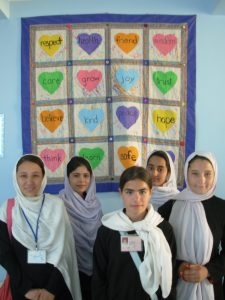 After 9/11, Julia was drawn to Afghanistan. At that time, it was the most poor and oppressed country in the world. The situation for women and girls, in particular, had been horrendous under Taliban, which forbid them from going to school or work outside the home. During her initial visit in January 2002, just months after the Taliban had been removed from power, she met with community elders, government leaders and religious leaders, and surveys were done. One answer that kept coming back to her was “Education.”
After 9/11, Julia was drawn to Afghanistan. At that time, it was the most poor and oppressed country in the world. The situation for women and girls, in particular, had been horrendous under Taliban, which forbid them from going to school or work outside the home. During her initial visit in January 2002, just months after the Taliban had been removed from power, she met with community elders, government leaders and religious leaders, and surveys were done. One answer that kept coming back to her was “Education.”
With the help of American colleagues based full time in Afghanistan, Julia began building schools to provide quality education and to empower Afghan children, especially girls. To date, they have equipped and built or repaired some 40 schools, serving some 25,000 students. They’re also focused on teacher training, community development, and strengthening the Afghan education system. At the same time, she puts great effort into connecting each Afghan school to communities (consisting of schools, businesses, civic groups, book clubs, etc.) across the U.S – a project she calls “Journey with an Afghan School.” By sharing her understanding of the Afghan and Islamic cultures, her works and experiences in the developing world, her hope is to “build bridges of understanding between our countries, transform communities, and diminish extremism”.
A nationally-recognized speaker, Julia has already spoken over 120 times around the country this year. When we caught up with her, she was on her way to Washington, DC to advocate for a Global Fund for Education with a grassroots lobbying group called RESULTS. (They have a group in most Congressional districts across the country.) She wants to ensure that children all over the developing world have a chance to attend primary school and the U.S. steps up and takes a leadership stand on this important global issue.
Although she’s not “home” too often any more, Julia is grateful to have a “base” in Washington State. She calls the development community here “phenomenal.” Putting aside the excellent work she has seen overseas, she finds practitioners to be extremely innovative, cost effective, thoughtful and compassionate. “Leaders within the state have definitely created an environment that fosters development and global citizenship. People understand that we are all interconnected.” This is evident especially when Julia was invited by the military at Camp Murray so troops deploying to Afghanistan would better understand what they could expect.
When asked what she finds most successful about her work, Julia doesn’t talk about the number of Afghan schools built or number of kids in class. It is the “hope and opportunity that has come to Afghan communities for the first time in decades and the social, political and economic transformation that is underway. It’s the genuine friendships that have been built between our countries, especially between those Afghans who distrusted and even hated the U.S. and those America who thought all Afghans were terrorists. And it’s seeing American school kids donate their birthday gifts to kids on the other side of the world, giving from their hearts and not expecting anything in return.” “People from diverse backgrounds living peacefully together in just, sustainable and life-affirming communities, forming a universal web of friendship, understanding and mutual respect” – this is the vision of Julia Bolz, and this is the vision of Ayni Education International.
To learn more about Julia Bolz or Ayni Education International, visit www.aynieducation.org.
To learn more about RESULTS, the importance of educating kids, and The Education for All Act of 2010, visit www.results.org.
*All photos provided by Ayni Education International.
Book Review
The Boy Who Harnessed the Wind: Creating Currents of Electricity and Hope
by William Kamkwanba and Bryan Mealer
2009 Harpers Collins Publisher
$25.99 Hardcover
The Boy Who Harnessed the Wind is an extraordinary story of a 14 year old Malawian boy who applies considerable ingenuity and a fascination with science to help his family overcome poverty and gain self-sufficiency. It is also a wonderful opportunity to learn about some of the root causes of poverty from the perspective of a youth who survived devastating circumstances, and went on to become an inspiration in Malawi and around the world. In 2007 William became a TED Global Fellow. In 2008, he delivered an address at the World Economic Forum on Africa, and in October, 2009, William and co-author/journalist Brian Mealer showed images and read from their book at the Seattle Public Library.
The book quickly draws the reader into William’s life and family, friends, and village, which is located in a remote area north of Malawi’s capital city. As drought and disease ravage the country we see, in detail, the best and worst of human nature. William’s family responds to desperate conditions in ways that demonstrate resiliency, stoicism, familial love, and inventiveness.
For example, when the family’s grain supply was reduced to ½ pail of flour, William’s father decided to take a huge risk, and sell all their food. His mother took the last of their flour, mixed it with soy and a bit of sugar, and baked zipumu cakes, which she sold in the market. “The cakes were heavy and filling and cheaper than the buns …that were also for sale. If a person had just some small change, but not enough to afford a bag of flour, the cakes were the only option”. Each day she made enough to feed the family their one meal a day, with the remainder made into cakes to sell the next. “Our profit is that we live”.
William had to leave school as his family could no longer afford the fees. Out of 70 students, only 20 remained due to crop failures. William would spend time at a nearby library, reading books to prepare for when his parents could afford to enroll him in school. It is at the library that he discovers a book on energy, and decides to teach himself to build a windmill. The windmill could supply his family with water needed to produce 2 crops per year, a garden for his mother, and electricity for his home.
William’s fascination with energy is woven throughout The Boy Who Harnessed the Wind, and he takes time to explain why Malawi has energy problems. Only 2% of Malawians have electricity. Hurricane lamps are too expensive; so many families use powdered milk can filled with kerosene with a cloth wick. “The fuel was very expensive, and the only place to buy it for a good price was 7 kilometers away. The lamps produced thick black smoke, which caused bad coughs. “
The energy problem is exacerbated by deforestation. Originally a country lush with forests, tobacco estates used the wood to “flue-cure the leaves” before selling them, and local farmers used more wood to build seasonal drying shelters for the leaves. Without the trees, the rains washed away soil, which stopped up dams, shut down the power plant, and resulted in power cuts, costly repairs and price hikes. With no crops, and no electricity, people were forced to sell remaining trees for firewood and charcoal.
William and Bryan simply and clearly illuminate dependencies between the environment, in-country and international development policies, and the local customs. We learn how the late rain one year wreaks havoc on crops for several seasons; and how a president’s refusal to acknowledge a drought results in unnecessary loss of life. We see how a decision to respond to IMF loan payment pressures results in the government selling all rather than part of its food reserves. At one point, families are reduced to cutting away the pesticide on seeds provided in “seed packets” to survive.
While the book addresses serious subjects, it is also filled with laughter and engaging characters. Meet William’s boyhood friends Geoffrey and Gilbert, William’s father, Trywell, who turns from a life of a trader and fighter to that of a farmer, and Kamba, a scrawny dog who adopts William for a friend.
The book’s sub-title, Creating Currents of Electricity and Hope, aptly describes the outcomes of William’s efforts. Most recently, William is partnering with buildOn.org to rebuild Wimbe Primary School. He is also co-founder of the Moving Windmills Project , founded in 2008 to pursue rural economic development and education projects in Malawi, Africa.
Related Web sites:
Podcast at the Seattle Public Library
William Kamkwanba
Bryan Mealer
Moving Windmills
TED
Featured Program: Global Washington Hosted Consultation on Development Effectiveness for Global Open Forum
On June 9th, Global Washington brought a global initiative to the Seattle area: we held a consultation for the Open Forum on CSO Development Effectiveness. The Open Forum is an initiative of a diverse coalition of civil society organizations and NGOs from around the world, which was conceived at the Accra High Level Forum on Aid Effectiveness in 2008. Its purpose is for CSOs to define their own principles and measures of effective development. Open Forum consultations are taking place all over the world, and focus on three topics: the principles for CSO Development Effectiveness; implementing guidelines; and the enabling environment for CSOs. InterAction is coordinating the Open Forum process in the United States, and Global Washington hosted the only U.S. consultation held outside of Washington, DC. Our consultation generated a thoughtful discussion and interesting ideas, which will inform InterAction’s report to the Open Forum Global Assembly in Montreal this summer. See our blog for an article with details from the discussion.
Announcements
Global Partnerships’ first Social Investor Forum draws 175 to hear about track record in microfinance investing
Bellevue, WA – On Tuesday, June 8, a crowd of 175 people gathered at the Meydenbauer Center in Bellevue, Washington, to hear about Global Partnerships’ track record with microfinance investment funds, a business strategy that has allowed the nonprofit microfinance lender to increase its impact on people living in poverty while giving a fixed-income-return to a growing market of social investors.
The Social Investor Forum, a free public event that was the first of its kind, featured Global Partnerships president and CEO Rick Beckett and board president Dean Allen. The organization’s leaders reviewed the results and impact of the three microfinance investment funds that Global Partnerships (GP) has created since 2005. For more information, click here.
Raise Awareness for World Refugee Day Artvocacy: An IRC sponsored event featuring original artwork by Seattle’s refugee and immigrant community
On June 19th, 2010 the IRC in Seattle will hold its fifth annual arts event in honor of World Refugee Day. Titled “Artvocacy 2010”, this event provides area refugee and immigrant artists, and performers an occasion to share their art and connect with their local community, while it also offers the public an opportunity to learn more about experiences that refugees endure. Artvocacy has been a great channel through which we’ve raised awareness of refugees in the past and we hope to uphold and continue the trend in the years ahead. This year we have also included the work of immigrant artists, who are not refugees themselves, but who have devoted much of their time and work to raising awareness of the tumultuous paths that continue to face refugee populations.
This year’s World Refugee Day on June 20 has as its theme, “Home,” in recognition of the plight of more than 40 million uprooted people around the world. Around 10 million of them are refugees of special concern to UNHCR. Every year, people across the United States use World Refugee Day as a focus for raising awareness and funds in their own communities to gather support for UNHCR’s urgent work. And at the same time they spread a little understanding about the reality of being a refugee. For more information on World Refugee Day, please click here.
If you have any questions, or would like to attend this year’s event, please contact Maggi Little at +1 206 623 2105 or Maggi.Little@theIRC.org
The World Affairs Council Presents: How I Caught the Global Health Bug with Ray Suarez
The World Affairs Council is pleased to announce a networking reception and lecture with Ray Suarez, senior correspondent for The NewsHour on PBS, focusing specifically on his extensive on-the-ground reporting on global health issues. This event will be held in Kane Hall at the University of Washington on the evening of Monday, June 21.
With support from the Bill & Melinda Gates Foundation Ray Suarez has traveled the world to report on health issues such as the H1N1 outbreak, HIV/AIDS, malaria vaccine development, and creating sustainable food supplies in developing countries. Our planned event provides an opportunity for the public to learn about why global health issues really matter when it comes to building successful communities locally and around the world.
Our anticipated audience will include approximately 500 guests representing a cross-section of our region’s business, government, academic, and community leaders, as well as a wide variety of globally minded people who share a passion for world affairs. In addition, with support from sponsors, we are specifically inviting local teachers and students to join us for this event. The evening will include a networking reception in advance of the lecture, including appetizers, drinks, exclusive remarks from Ray in advance of the public lecture, and preferred seating at the Main event. The main event will include clips from Ray’s global health coverage, commentary on successes and challenges in global health, and a moderated Q&A section. Please find the full event details at: http://world-affairs.org/event_Ray_Suarez.htm.
OUR WORLD AT WAR: Photojournalism Beyond the Front Lines
The International Committee of the Red Cross sent five award-winning photojournalists to eight countries (Afghanistan, Colombia, Democratic Republic of Congo, Georgia, Haiti, Lebanon, Liberia, Philippines) to capture how war and armed violence have affected people’s lives. The result is this series of haunting and hopeful images which reveal the loneliness, joy, despair and dignity in those left behind.
Photo exhibit open daily 9am – 9pm; for more information on the accompanying film screenings and lecture series, please visit: http://www.seattleredcross.org/article.aspx?&a=8044.
Washington State Coalition Against Domestic Violence Hosts Emergency Preparedness Training for Domestic Violence Programs with Elaine Enarson
WSCADV is proud to present international expert, Dr. Elaine Enarson. Dr. Enarson is an American disaster sociologist, a co-founder of the Gender & Disaster Network, and former executive director of the Nevada Network Against Domestic Violence. She was lead course developer of a FEMA course on social vulnerability, project manager of a grassroots risk assessment project with women in the Caribbean, director of the on-line Gender and Disaster Sourcebook initiative, and professor. She is co-editing an international reader (Women, Gender and Disaster Risk Reduction: Global Issues and Challenges) and researching the health of farm families affected by BSE (“mad cow” disease)
You are already an expert in the day-to-day emergencies created by domestic and sexual violence. At this training, we will look at what happens to women and children in disaster; identify steps for emergency preparedness for internal operations and in the community; and identify ways to advocate with systems such as in your local government emergency planning. Check out the website for the Gender and Disaster Resilience Alliance: http://usgdra.org/
This training is open to domestic and sexual violence programs. You are welcome to invite a local FEMA or government emergency preparedness representative to join you. July 29, 2010 in Seattle, WA or July 30, 2010 in Yakima, WA. Register Online Now
Please submit your events to our calendar!
xxx
Global Washington Events:
June 23
How to Become a Jolkona Partner
June 24
Harnessing Commercial Strategies to Achieve Development Goals
June 29
PR & Communications Case Roundtable with Agros (MEMBERS ONLY)
Other Events:
June 19
Artvocacy with the IRC
June 20
UN World Refugee Day
June 21
World Affairs Council Presents: How I Caught the Global Health Bug with Ray Suarez
June 26
OUR WORLD AT WAR: Photojournalism Beyond the Front Lines
July 29
Emergency Preparedness Training for Domestic Violence Programs with Elaine Enarson
